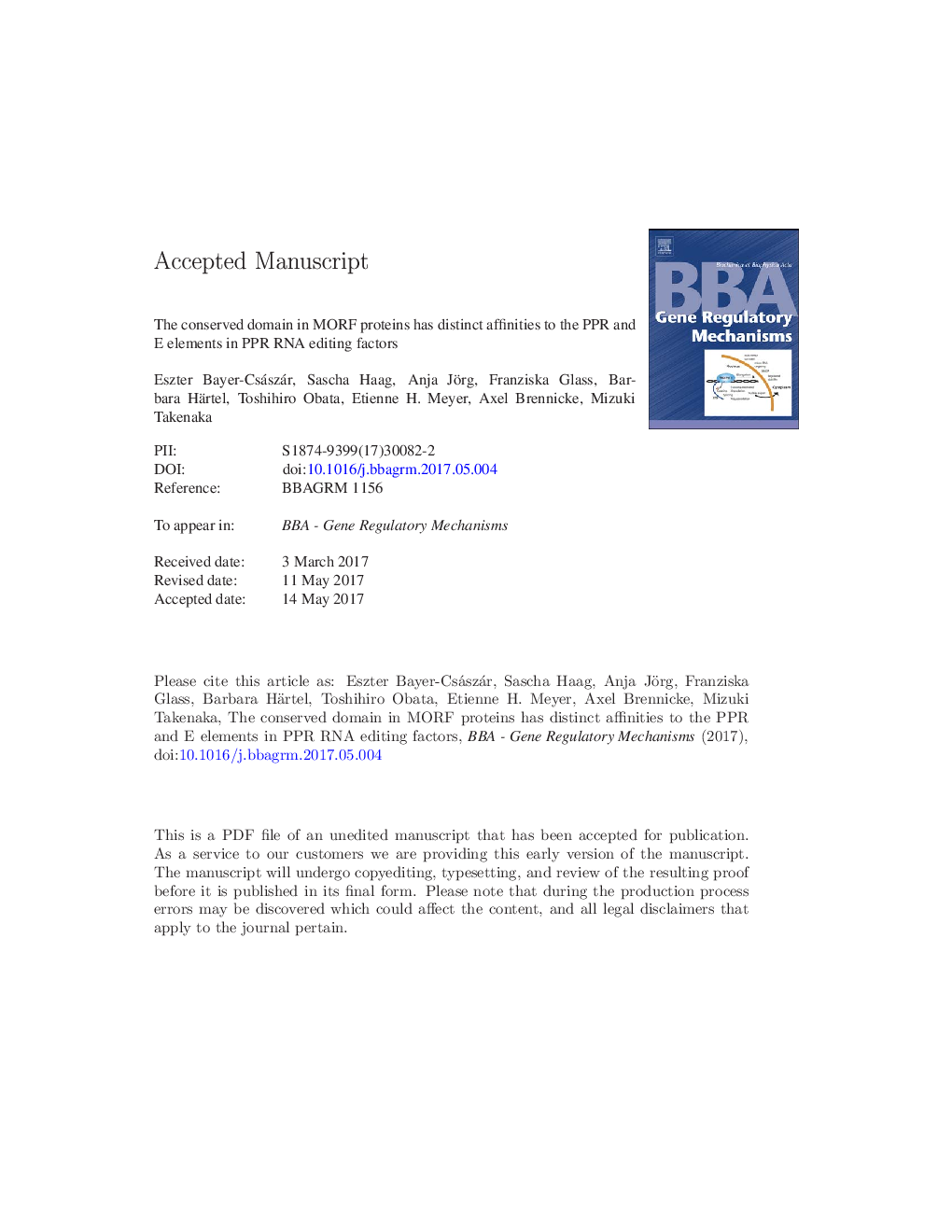| Article ID | Journal | Published Year | Pages | File Type |
|---|---|---|---|---|
| 5507754 | Biochimica et Biophysica Acta (BBA) - Gene Regulatory Mechanisms | 2017 | 35 Pages |
Abstract
In plant organelles specific nucleotide motifs at C to U RNA editing sites are recognized by the PLS-class of pentatricopeptide repeat (PPR) proteins, which are additionally characterized by a C-terminal E domain. The PPR elements bind the nucleotides in the target RNA, while the function of the E domain has remained unknown. At most sites RNA editing also requires multiple organellar RNA editing factor (MORF) proteins. To understand how these two types of proteins are involved in RNA editing complexes, we systematically analyzed their protein-protein interactions. In vivo pull-down and yeast two-hybrid assays show that MORF proteins connect with selected PPR proteins. In a loss of function mutant of MORF1, a single amino acid alteration in the conserved MORF domain abrogates interactions with many PLS-class PPR proteins, implying the requirement of direct interaction to PPR proteins for the RNA editing function of MORF1. Subfragment analyses show that predominantly the N-terminal/central regions of the MORF domain in MORF1 and MORF3 bind the PPR proteins. Within the PPR proteins, the E domains in addition to PPR elements contact MORF proteins. In chimeric PPR proteins, different E domains alter the specificity of the interaction with MORF proteins. The selective interactions between E domain containing PPR and MORF proteins suggest that the E domains and MORF proteins play a key role for specific protein complexes to assemble at different RNA editing sites.
Related Topics
Life Sciences
Biochemistry, Genetics and Molecular Biology
Biochemistry
Authors
Eszter Bayer-Császár, Sascha Haag, Anja Jörg, Franziska Glass, Barbara Härtel, Toshihiro Obata, Etienne H. Meyer, Axel Brennicke, Mizuki Takenaka,
